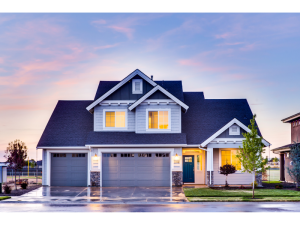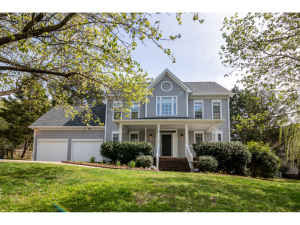Heating is one of the most vital systems in our homes. When it comes to cold wintery days and nights, we rely on them to keep our homes and our families warm and comfortable. As a result, our homes’ central heating sees quite a lot of work, much like the cooling systems work overtime during the hot summer days.
In order to make sure that our furnaces work as they should, many homeowners take some of the simpler care and maintenance steps into their own hands. However, with how often air is brought into the system, making sure that the filters and other parts are properly aligned is important. Incorrectly installing a filter, for example, can cause more harm than good, even if the filter simply wears out more often than usual.
To help you figure out more about how furnace air flow works and how to work with it, we’ve put together this helpful article. If, at any time, you feel that you need to get a professional’s opinion or help, you can call Clover Contracting. We’re available all day, no matter the day of the week or the time.
How your furnace works
Out of the different kinds of furnaces, the most well known ones are gas furnaces. These furnaces, as the name suggests, use natural gas to heat the air brought into the system. Typically, this can be done via burning the gas, which then allows the heat to get absorbed through special heat exchangers in the furnace.
Once the air is heated, it travels through your house before getting replaced with newly heated air. Finally, when the furnace gets a signal that no more heating is needed, the furnace stops burning the gas and it turns off.
There are also other kinds of furnaces that vary depending on what fuel it uses. After natural gas, propane furnaces are used in roughly 10% of homes and work much the same way. Natural gas, propane and oil type furnaces all use a combination of burning and heat exchangers to be effective. Electric furnaces instead use heating elements to warm incoming air, simply turning off when not in use.
Which direction does air flow in furnace units?
There are two ways to find out what direction the air should flow when working with your furnace. One way is to check with the filter your furnace uses. Many air filters have an arrow that’s used as a guide when reinstalling it. This arrow is typically meant to be pointing towards the furnace and away from where the air returns for further reheating.
This information can be combined with the added details about how air enters the furnace. If your furnace draws in more air from the outside, the first place it goes is through the ducts. From there, the air is pushed through a filter that cleans out any debris from both outside air and reused indoor air, before then moving to the furnace. Finally, as mentioned, the air is heated before getting released into your home or office.
Common furnace air flow problems
Depending on how recently your home was built, some of these issues can easily be attributed to the furnace’s age. This can be especially true if you don’t change out the filters as regularly as it should be. An unchanged filter can actually cause more damage to the furnace itself.
Dirty air filters
One of the more common causes that you’re finding issues with your furnace air flow is that you have a dirty air filter and need to get it replaced. As more dirt and other debris gets caught in the filter, more and more air gets restricted. With less air actually making it to the furnace to get heated, you end up getting less air out.
The dirty air filter can also negatively affect how the furnace operates as well. With the debris clogging the filter, less oxygen gets drawn in. That oxygen is needed to allow the furnace to properly burn the fuel it uses, which in turn can force the appliance to pull more fuel.
Over time, this can cause the furnace itself to heat up more and more until it overheats and fails. Thankfully, installing a new air filter can easily be done without needing to call a technician in.
Wrong sized vents
In some cases, the reason your home isn’t getting the proper furnace air flow it needs is because of a simple error. Depending on the size of your home, specifically sized ducts need to be installed to be optimal and efficient for the furnace to work. If your ducts are larger than what your home and furnace needs, the overall air flow is actually reduced.
This is a fairly simple issue that can be caused by some HVAC contractors incorrectly installing them into the house. The process is fairly complex, and not many contractors are perfect when it comes to said installations. If you suspect that this is the main cause, and you can’t find any other reason for a decreased air flow on a furnace, you can call Clover Contracting.
Damaged or blocked air ducts
One possible cause for a decrease in air flow is something’s either blocking your air from properly flowing through or the very air ducts are damaged. Whatever the reason is, these issues can block or reduce the air getting warmed up and any air that does get released into the home can be released into the walls before it reaches your living areas.
Takeaway
As large as your furnace is, it can be quite simple to understand once you know the basics of the layouts. With many furnaces being closed systems, the air that’s brought in gets filtered then heated before getting released into your home. Once the air loses that heat, it then gets drawn back in for reheating. Any obstructions, like dirty filters or loose insulation, can cause less air to make it to the furnace, in turn releasing less air into your home.
If you want professional help to replace or do servicing on your furnace, you can just call Clover Contracting.




